One of the companies which I admire very much for its work with British Wool is The Natural Fibre Company, a specialist wool mill at Launceston on the Devon-Cornwall border where wool growers can pay to have their fleeces spun into yarns. As well as offering this service to wool growers, The Natural Fibre Company produce their own line of yarns – Blacker Yarns – and finished products such as throws, cushions etc. – under the product banner Blacker Designs. This system means that wool growers can either sell their wool to the Natural Fibre Company to become Blacker Designs Yarn or have their wool spun up in order to then sell it themselves. On both counts, The Natural Fibre Company is finding ways to process British Wool so that it doesn’t all end up in carpets, or on a bonfire. There’s more, however, as one of the things that I find really impressive about The Natural Fibre Company is the emphasis throughout the Blacker Design and Yarn ranges on producing breed-specific products. I love the fact that you can buy breed specific throws at Blacker Designs; and that innovative uses for yarns traditionally considered too coarse for knitting with are developed into other kinds of products so that no wool from any sheep breed need go to waste. Check out this garden twine, made from the strong wool of The Devon and Cornwall Longwool sheep breed. I also like the values at the heart of The Natural Fibre Company, and the company’s emphasis on sustainability;
We believe it is wrong to use oil-based or high energy input fibres when wool and other natural fibres are sustainable high-performance raw materials providing warmth, insulation and comfort.
I think there is something very forward-thinking about The Natural Fibre Company. The emphasis on producing sustainable, breed-specific products is akin to contemporary trends within the culture of Farmer’s Markets; if you know exactly what you are buying, where it has come from, how it has been produced, the product has an added value. I love that on The Natural Fibre website for example, you can watch videos detailing the journey of fibre spun there from sheep to shelf. I also like how – as a knitter – you can learn about sheep breeds and their difference fleece qualities by knitting with breed-specific yarns. Blacker Designs provided much of the yarn for an amazing class in knitting with rare breed wool which I attended, and which was run by Deb Robson (whom we heard from earlier in Wovember). I was amazed by the different natural sheep shades which exist, and also by how differently the wool from each different breed behaves when you knit with it.
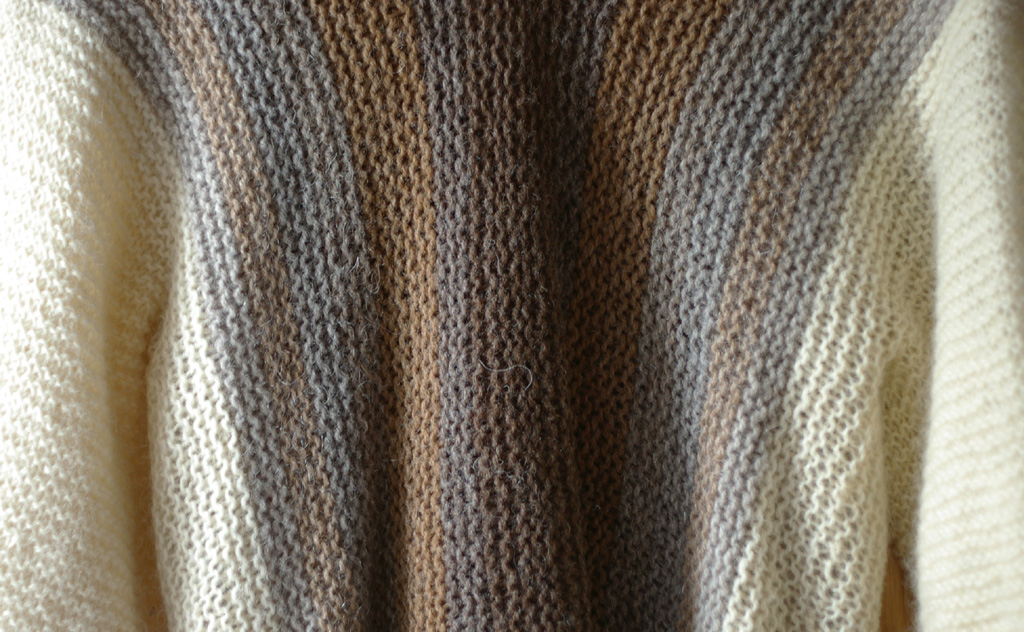
Close up of Layter, a knitting design by me, using the different sheep breed yarns available from Blacker Designs
You would think that running The Natural Fibre Company, Blacker Designs and Blacker Yarns would be enough for one person, but Sue Blacker – the tireless Managing Director of the company – set out last year to additionally establish WOOLSACK – a London 2012 Olympic and Paralympic Games Inspire Project. Woolsack gives WOOL a notable presence in the London Olympic and Paralympic Games, 2012. The idea is that personal, handmade 100% wool cushions will be given as welcome gifts from the people of Britain to the London 2012 Olympic and Paralympic athletes. The wool cushions are being produced en masse around the country by knitters, weavers, crocheters, felt-makers etc. according to these guidelines, and stuffed with 100% British Wool at a number of prominent events around the country. An event is currently taking place at Harrogate, to coincide with the knitting and stitching show there. The British Olympic Association requested 40 special red, white and blue cushions for the young athletes representing Britain in Innsbruck, January 2012, and Volunteers are now racing to finish these 40 special cushions by the end of the Knitting and Stitching show in Harrogate (24-27 November);
At the show, the finished cushions will be stuffed with British wool stuffing and there will be a race against time to finish the last few, to get them to BOA in time. These cushions will be given to the young athletes to encourage them through the final weeks of their training.
– Woolsack Press release, Sue Blacker
The Woolsack website is very comprehensive, reminding visitors that Britain is a country built almost entirely on the wool trade, and that the Lord Speaker in The House of Lords Chamber historically sat on a sack made of wool in recognition of this; it also provides an enormous list of different UK suppliers for 100% British Wool;
Athletes who may be competing in the London 2012 games have already seen sample cushions. Their comments show how much they appreciate the personal nature of this gift handmade entirely from a British grown product. Sue Blacker said, “This gift really is a little bit of Britain to take home with them, while reflecting the importance of wool in England’s history.”
– Woolsack Press release, Sue Blacker
Woolsack puts an emphasis on engaging different communities all around the country with the Olympic and Paralympic Games;
People of all ages and backgrounds, individually or in school, WI, and craft groups across the UK are already busy making up to 14,000 cushions from British wool to be given as personal welcome gifts to the athletes competing in the London 2012 Olympic and Paralympic Games.
The project enables everyone including carers, the disabled and those with challenges in their life to have a personal connection to the 2012 Games through making a Woolsack cushion.
Cushions are given to athletes in a very personal way, and the emphasis throughout the project is on celebrating – and finding a fitting use for – the Wool grown in Britain;
Each cushion has the special Woolsack label stitched on and carries a label with a personal gift message from the maker(s).
Moving messages on the cushion labels show how much the makers appreciate the opportunity to have a personal involvement with the 2012 Games. Anyone of any age can contribute towards making a cushion. Several schools in the north of England are learning new skills to enable them to make cushions from British wool, with some donated by local farmers.
– Woolsack Press release, Sue Blacker
It is interesting to consider Woolsack in relation to the other cultural projects proposed by artists to celebrate the woolly heritage of the UK as part of the Olympic and Paralympic Games. Consider – for instance – Shauna Richardson’s Lionheart project, in which 3 giant crocheted lions will be toured around the UK, as a reminder of our once-powerful wool trade;
These powerful sculptures reflect the region in both symbol and materials. Richard the Lionheart’s three lions crest is created using locally sourced Peak District wool, celebrating our rich textile heritage.
– Shauna Richardson’s official Lionheart Project website
There was also an excellent proposal by Nancy J Clemance based around Shepherd Huts which sadly did not get chosen by the Cultural Olympiad as a major, regional project;
Nancy J. Clemance proposes Hutliving Project, commissioning artists from a wide range of disciplines to make a creative response to individual shepherd huts across the region’s countryside. These dwellings are currently in varied states of repair, with some being permanently occupied and others in the process of being brought back to life. The specific location of each hut will inspire the shape and look of the artistic commissions and reveal a historical map that reflects a slower pace of life in contrast to our overloaded-consumer generation. From this a new map will emerge to encourage visitors and, by June 2012, it will feature a trail of the finished commissions. Each will be located at least within or nearby their hut and help to provide a new interpretation of England’s rural history, complemented by a series of public events at regional galleries.
– Nancy J Clemance, Thurgarton Iron Works
The idea of the giant lions clad in Lake District Wool is definitely impressive, but Nancy Clemance’s project held the possibility for deeper community involvement with the physical evidence and geography associated with wool production in the UK. I am slightly obsessed with the different types of huts connected with different regions of Britain, and with the Shepherd’s hut as a sort of makeshift and necessary dwelling for minding animals during difficult lambings or harsh winters. I felt that a project which invited artists to look at the spaces which Shepherds historically used would give insights into the poverty and difficult realities often associated with this thankless work – on which England’s great Wool trade depended – whereas the idea of the giant, crocheted lions does somehow allow that side of things to be overlooked in favour of offering woolly novelty and spectacle.
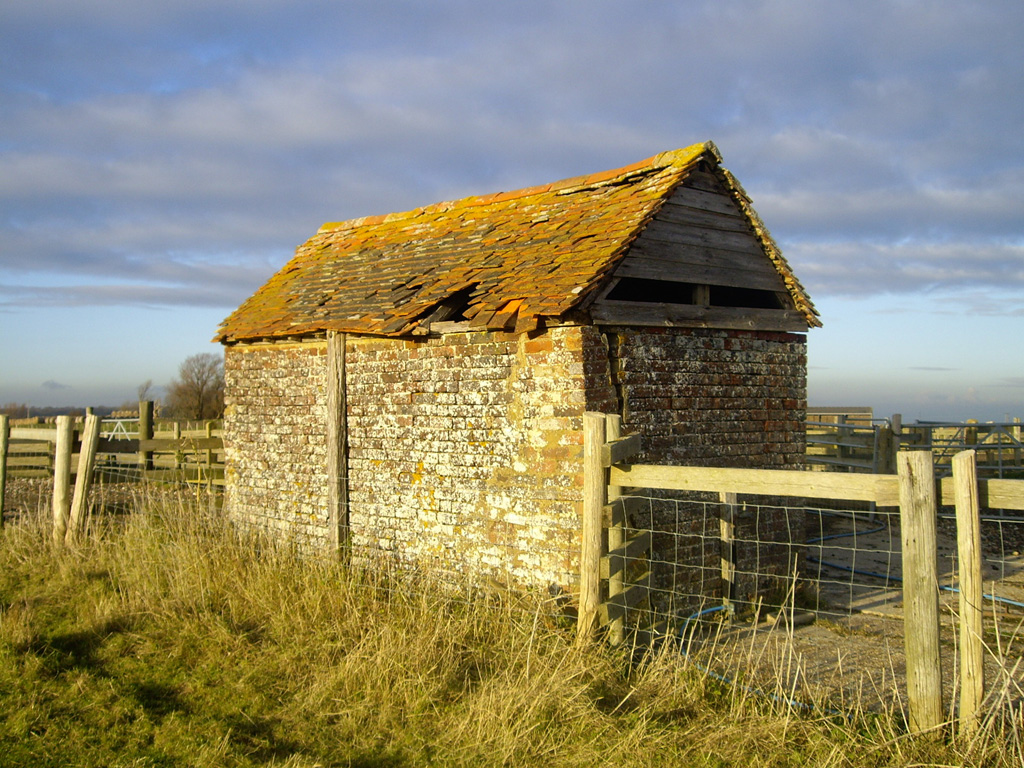
Looker’s Hut, Romney Marshes, photo by Felicity Ford. There are a number of falling-apart dwellings like this, scattered around the marshes, and a very interesting article about the “Lookers” here
When I read about Hutliving – Nancy J Clemance’s proposal for the Cultural Olympiad – I was encouraged by the idea that interest in some of the most neglected, historic spaces in the British landscape – Shepherd’s Huts – might be revived through public engagement. But alas, it was not to be.
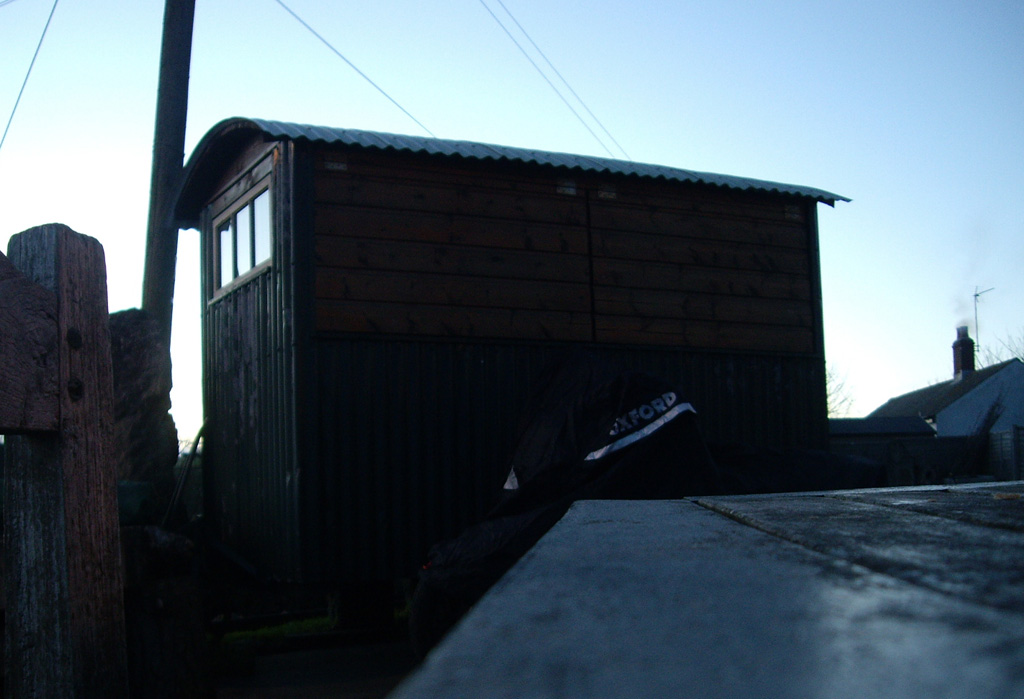
Shepherd’s Hut, spotted at Worth Matravers, whilst scouting out the route for Mark’s Walk 2012 project, photo by Felicity Ford
My own modest, woollen contribution to the Olympics will mostly consist of creating woollen socks and walking accoutrements to clad myself and Mark while we undertake his long-distance walk – Walk 2012 – during the London 2012 Olympic Games. We shall walk from the sailing area where the Olympics begin, (Weymouth) to the stadium in Stratford, (London) in time for the closing ceremony. This 180+ mile walk – scouted out entirely by my gorgeous, wool-wearing partner, Mark Stanley – will take in many traditional sheep-farming areas, and I am sure the long hours of walking will be full of talk of Britain’s former flourishing wool trade as we trek through the various counties covered by the walk.
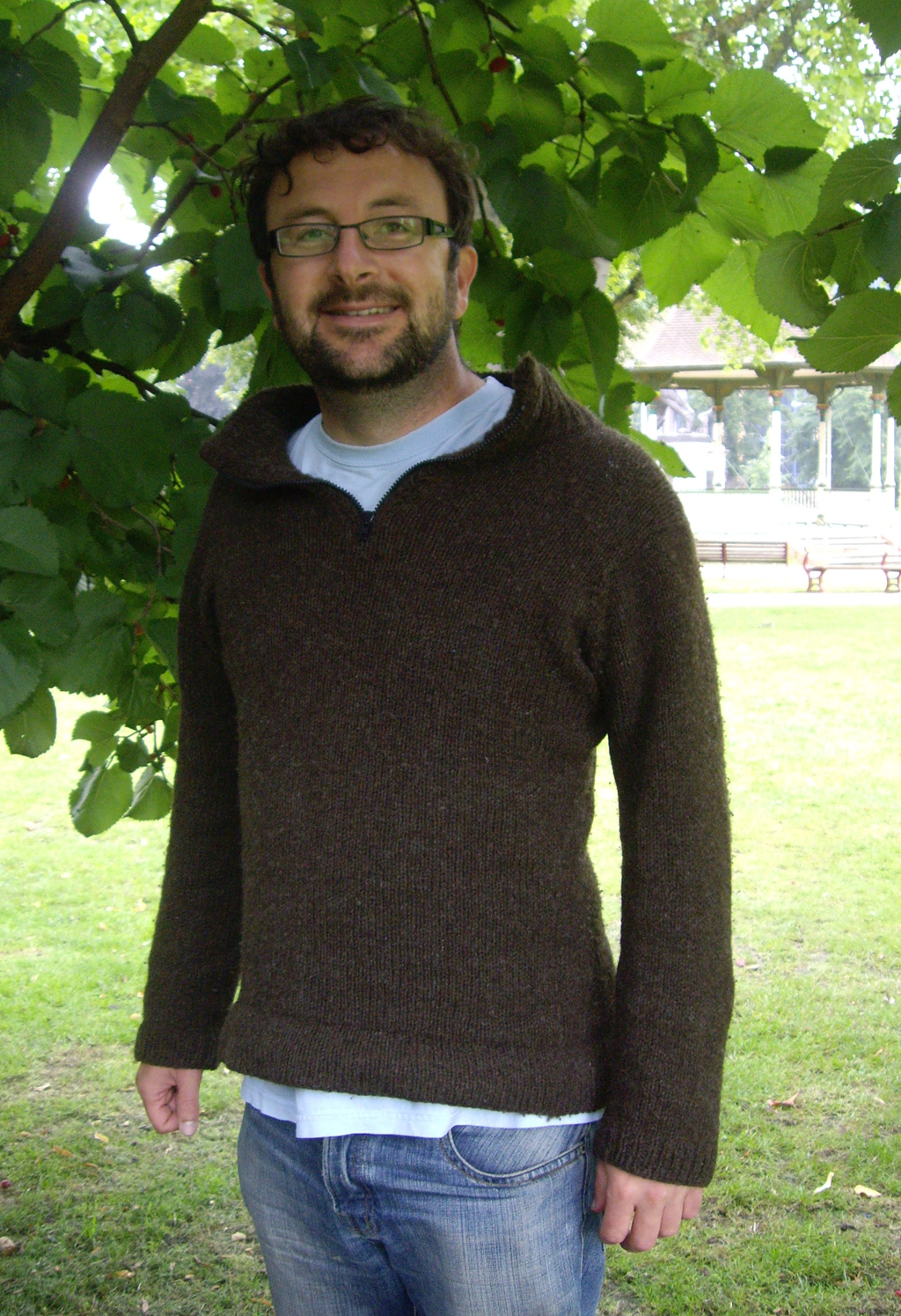
Mark Stanley, looking decidedly beardy (Movember-ish?) after checking out the Walk 2012 route last Summer, photo by Felicity Ford
Incidentally, the socks I knit Mark for the purpose of celebrating his long-distance route-finding skills – and the sweater he is wearing in the photo above – are made in Blacker Designs Yarn, and Mark has written about wool as the bet material for walker’s base-layers here.
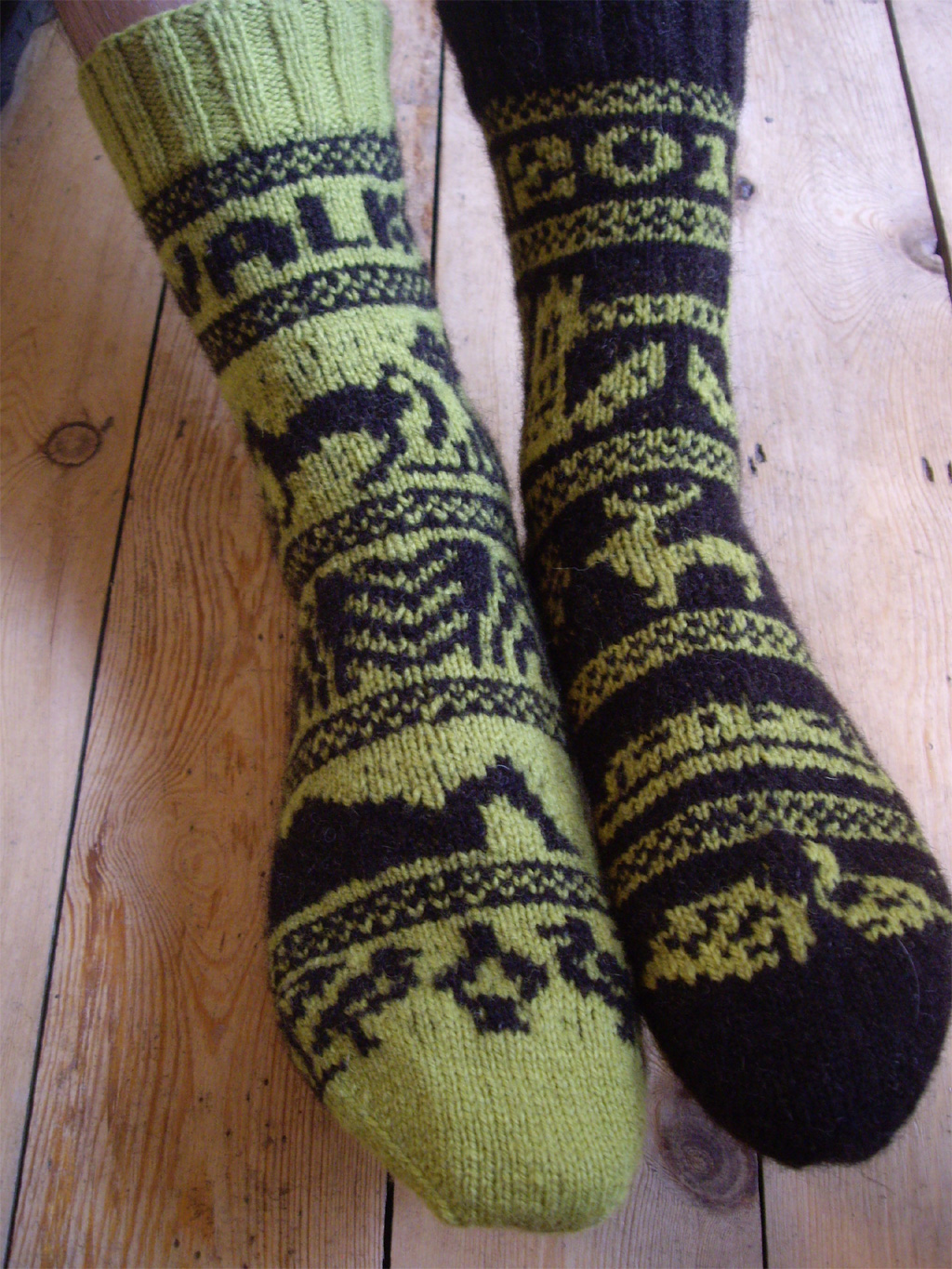
Walk 2012 socks, featuring fairisle depictions of many of the sites of interest found between Weymouth and London! Design and photograph by Felicity Ford
However, in considering all the ways in which wool has been associated with cultural plans re: The London 2012 Games, for community involvement credentials it really is hard to beat Woolsack. People have been gathering in dusty halls around Britain for centuries to weave and knit and talk and make such humble things as cushions. For its connection to existing networks of craftspeople, and for its links to a history of Village Fairs and Church Bazaars, I love the idea of the Woolsack project. I also find Woolsack to be an excellent example of the fact that Art and Culture do not just happen in the great cities of the UK, commissioned by ACE, but that people are making things in their houses and their community centres now – as always – and that this too is absolutely as much a part of British Culture as public commissions and gallery exhibitions.
Many people are involved in Woolsack, and it is absolutely connected to the British Wool Trade as it stands today – right from the enthusiastic yarn-purchaser and hand-knitter through to the mill-operators, scourers who wash wool, and all the shepherds with flocks whose wool is suitable for spinning into yarn. It is easy to be cynical about the Olympics – about the time and resources and space that are taken up by hosting the games in London – but they are happening whether you care about Athletics or not. I for one am absolutely delighted that – through the efforts of everyone involved in Woolsack; through Shauna Richardson’s spectacular lions; through the wool we shall wear as base-layers and hats on Walk 2012; and even through the proposal for Hutliving – WOOL will be a part of that.
All the quotes in this post relating to Woolsack have been taken directly from a press-release issued by Sue Blacker, who has also contributed some extra prizes to our Wovember competition (see the competition page for details). Sue suggested that we award vouchers for the best sheep photos entered into our gallery, “because sheep are where it all starts.” We couldn’t agree more, Sue.
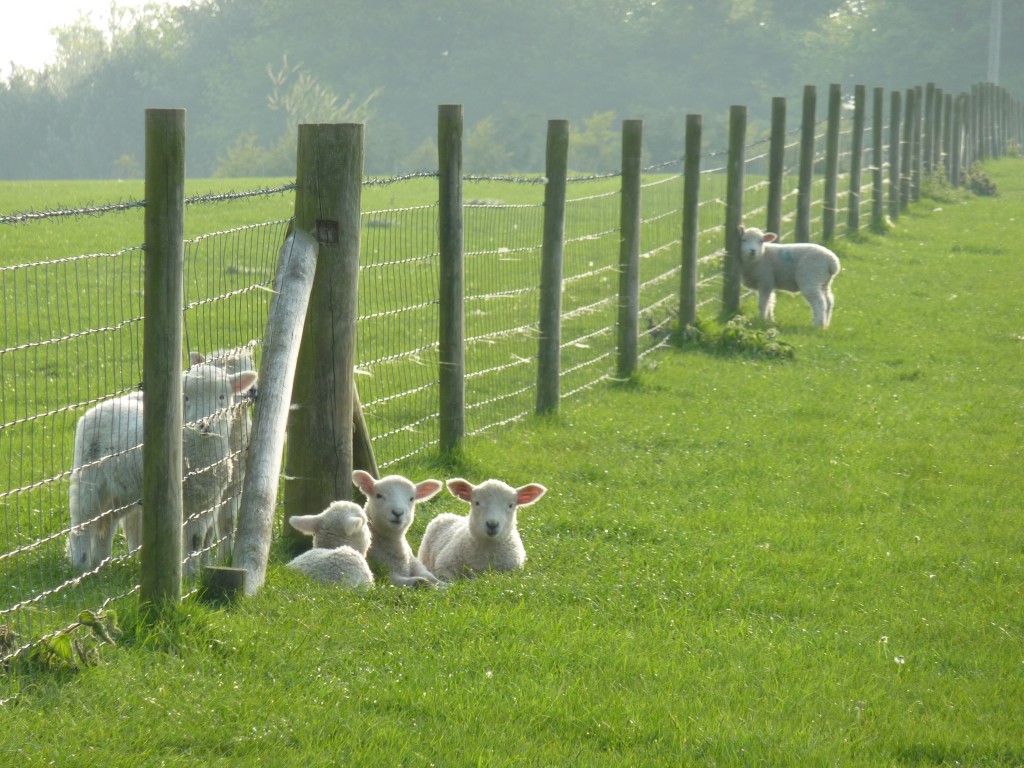
Sheep photographed by Mark Stanley, near Itchen, on the Walk 2012 route